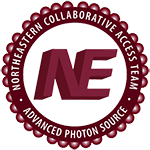Crystal structures of Lgr4 and its complex with R-spondin1.
Publication Type:
Journal ArticleSource:
Structure, Volume 21, Issue 9, p.1683-9 (2013)Keywords:
Amino Acid Sequence, Animals, Crystallography, X-Ray, HEK293 Cells, Humans, Models, Molecular, Protein Interaction Domains and Motifs, Protein Structure, Quaternary, Protein Structure, Secondary, Receptors, G-Protein-Coupled, Thrombospondins, Xenopus, Xenopus ProteinsAbstract:
<p>The leucine-rich repeat-containing G-protein-coupled receptors (Lgrs) are a large membrane protein family mediating signaling events during development and in the adult organism. Type 2 Lgrs, including Lgr4, Lgr5, and Lgr6, play crucial roles in embryonic development and in several cancers. They also regulate adult stem cell maintenance via direct association with proteins in the Wnt signaling pathways, including Lrp5/6 and frizzled receptors. The R-spondins (Rspo) were recently identified as functional ligands for type 2 Lgrs and were shown to synergize with both canonical and noncanonical Wnt signaling pathways. We determined and report the structure of the Lgr4 ectodomain alone and bound to Rspo1. The structures reveal an extended horseshoe leucine-rich repeat (LRR) receptor architecture that binds, with its concave side, the ligand furin-like repeats via an intimate interface. The molecular details of ligand/receptor recognition provide insight into receptor activation and could serve as template for stem-cell-based regenerative therapeutics development.</p>
